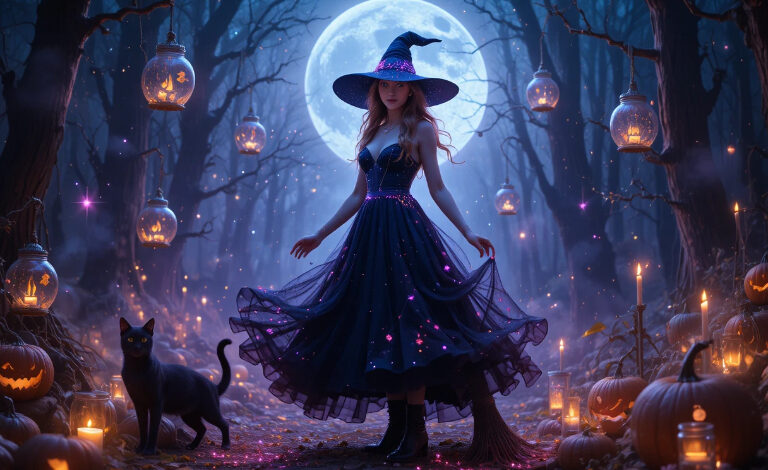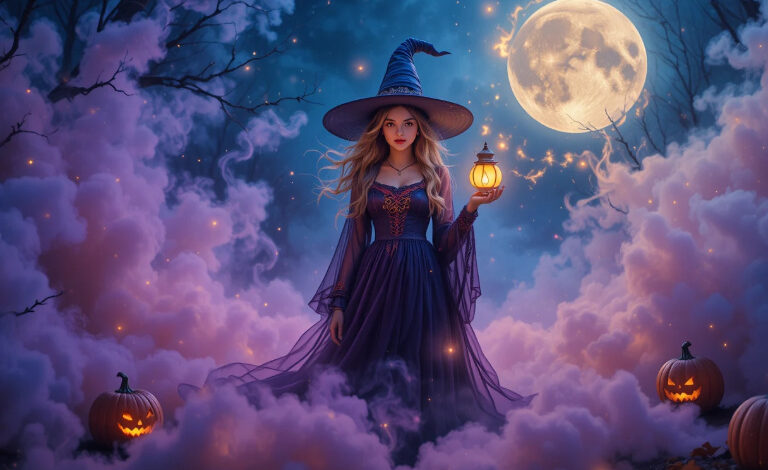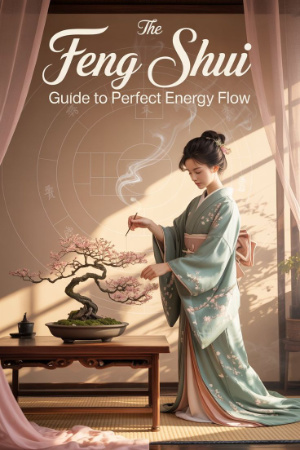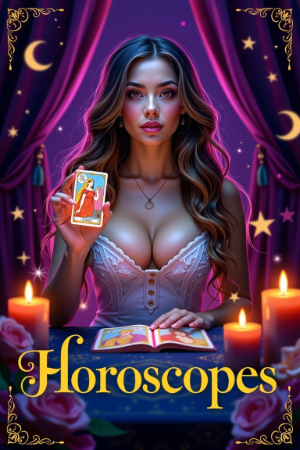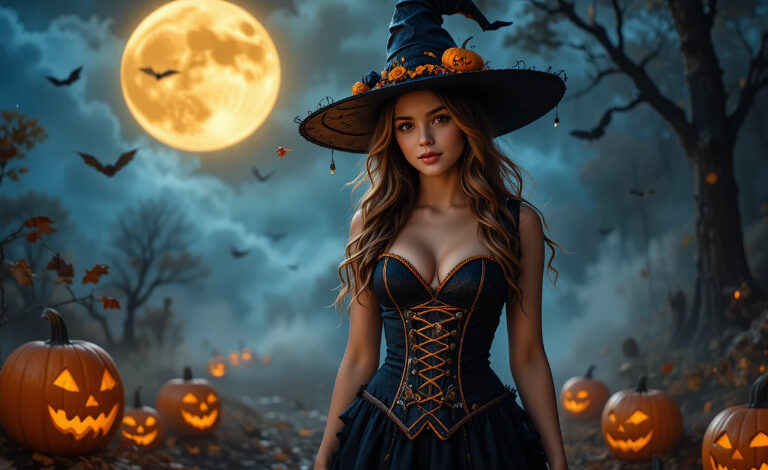
Ever notice how the air feels different at the end of October? The nights stretch longer, the leaves crunch underfoot, and there’s this strange hush that feels both eerie and comforting. That feeling isn’t just the Halloween mood—it’s the ancient spirit of Samhain, the original witch’s New Year. Long before candy bowls and costumes, this sacred festival marked a time when the veil between worlds grew thin, and spirits walked freely among the living.
Samhain (pronounced Sow-in) has roots far older than modern Halloween. It’s one of the oldest Celtic festivals, celebrating death, rebirth, and the turning of the seasons. For ancient pagans, it was the end of the harvest and the beginning of the dark half of the year. It wasn’t about fear—it was about respect. The spirits of ancestors were welcomed home with food, firelight, and blessings, as the living paused to honor the unseen.
Today, witches, pagans, and spiritual folk still celebrate Samhain in all kinds of ways. From lighting candles for loved ones who’ve passed, to holding quiet rituals under the moon, the heart of Samhain remains the same: honoring endings, embracing transformation, and listening to the whispers of the spirit world.
So if you’ve ever felt that Halloween night carries a strange kind of magic, you’re right. Samhain isn’t just a holiday—it’s a sacred time of transition, where the living and the dead meet in peace, and where we get a glimpse of the mystery that ties all things together.
The Origins of Samhain: The Witch’s New Year
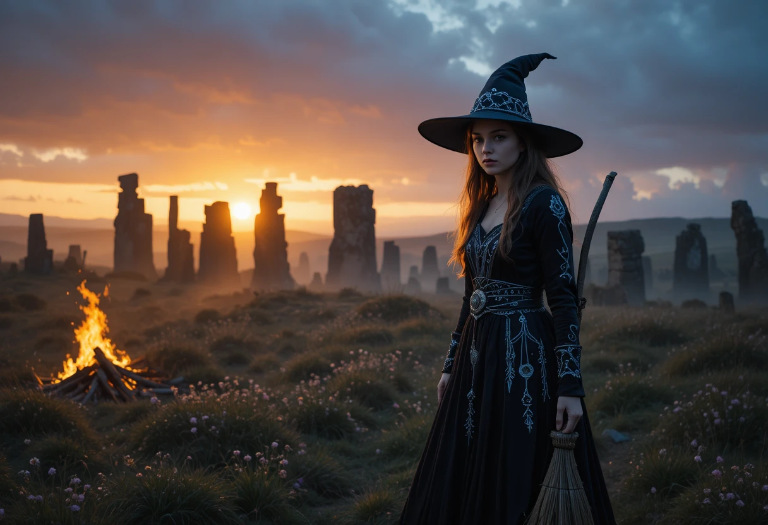
Samhain began thousands of years ago with the Celts of ancient Ireland, Scotland, and Wales. It marked the final harvest before the cold, barren months ahead—a time to gather the last of the crops and prepare for winter’s darkness. To them, the year was split into two halves: light and dark. Samhain stood at the gateway between the two.
This was more than just a festival—it was a sacred turning point. The Celts believed that during Samhain, the barrier between the worlds of the living and the dead thinned, allowing spirits to visit. Ancestors were honored with feasts, offerings, and fires to light their way. People set extra places at their tables for family members who had passed, believing they’d come to share a meal once more.
But it wasn’t all gentle remembrance. Not all spirits were friendly, so protective charms and bonfires were lit to keep wandering energies at bay. People wore costumes and masks to confuse malevolent beings, a tradition that evolved into modern Halloween dressing up.
Samhain also marked the time of the Celtic New Year, symbolizing death before rebirth—the cycle of life mirrored in nature. Crops died, animals were culled, and people turned inward, reflecting on the past year’s blessings and lessons. It was both an ending and a promise of new beginnings.
The Magickal Meaning Behind Samhain
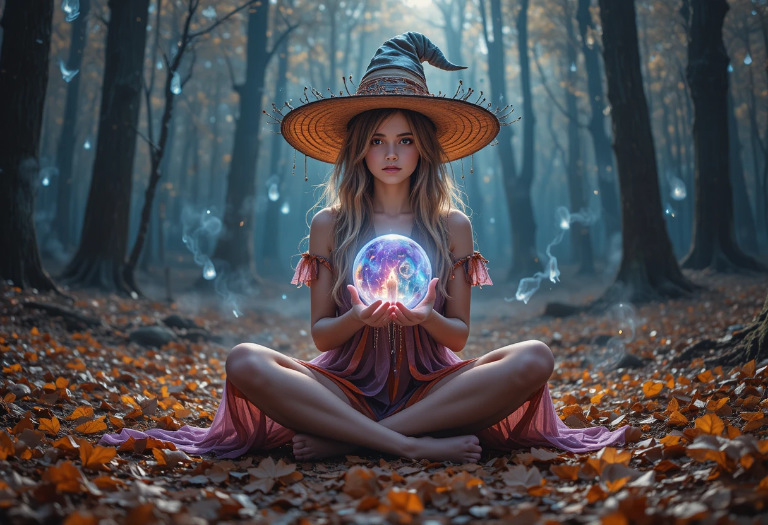
At its heart, Samhain is about transformation. It teaches that death isn’t an end, but part of an eternal cycle. The falling leaves, the decaying earth, the quiet stillness—these are not signs of loss but of renewal. Everything that fades returns in another form.
This season invites us to slow down and face what we normally avoid: endings, change, and the unseen. The veil between worlds becomes a mirror, showing us our ancestors, our shadow selves, and the truths we might otherwise ignore.
For witches and spiritual seekers, Samhain is the most powerful night of the year for divination and spirit communication. The veil’s thinness makes it easier to receive messages from guides, ancestors, or loved ones on the other side. Tarot readings, scrying with a black mirror, or simply meditating under candlelight can all open pathways to deeper insight.
It’s also a time for banishing and release. Just as farmers cleared old fields to prepare for new crops, witches use Samhain to clear energy that no longer serves. Writing down regrets, fears, or lingering pain and burning the paper in ritual fire is a classic way to let go before the new year begins.
Ways to Honor Samhain Today
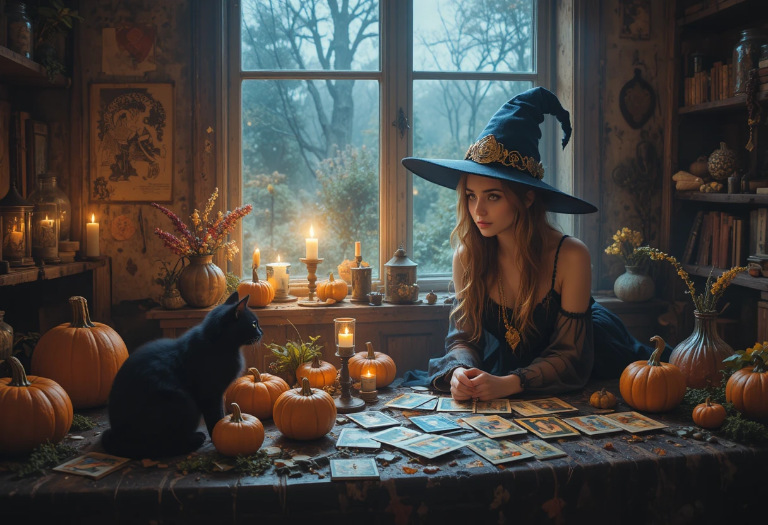
Even if you’re not part of an old Celtic clan, you can still celebrate Samhain with deep respect and magick. Here are some simple, modern ways to connect with the spirit of this ancient festival:
1. Create an Ancestor Altar
Set up a small space in your home with photos, candles, or small mementos of those who have passed. Offer their favorite food, drink, or flowers. Light a candle and simply speak to them—thank them for their love and guidance.
2. Hold a Dumb Supper
This is a quiet, candlelit meal where no one speaks. An extra place is set for the ancestors, and the silence allows their presence to be felt. Many people say they can sense warmth, whispers, or even smells of familiar perfume during these sacred moments.
3. Light a Samhain Fire
If you have a safe outdoor space, a small bonfire or even a single candle can symbolize the old Celtic fires. As it burns, imagine it burning away what you no longer need—grief, fear, or heaviness—making space for new blessings to come.
4. Do a Divination Ritual
Pull tarot cards, cast runes, or scry into a dark bowl of water. Ask for messages about the year ahead or insights from your spirit guides. Samhain energy makes intuition stronger and visions clearer.
5. Decorate with Meaning
Pumpkins, apples, pomegranates, black candles, and dried herbs like sage or mugwort are all powerful Samhain symbols. These carry both protective and spiritual energy, helping your home feel aligned with the season’s magic.
6. Reflect and Release
Journal about your year—what’s ending, what’s beginning, and what lessons you’ve learned. Samhain is a spiritual checkpoint. Let go of guilt, old habits, or self-doubt. Light a candle and affirm that you’re ready for the next cycle of your growth.
Symbols and Spirits of Samhain
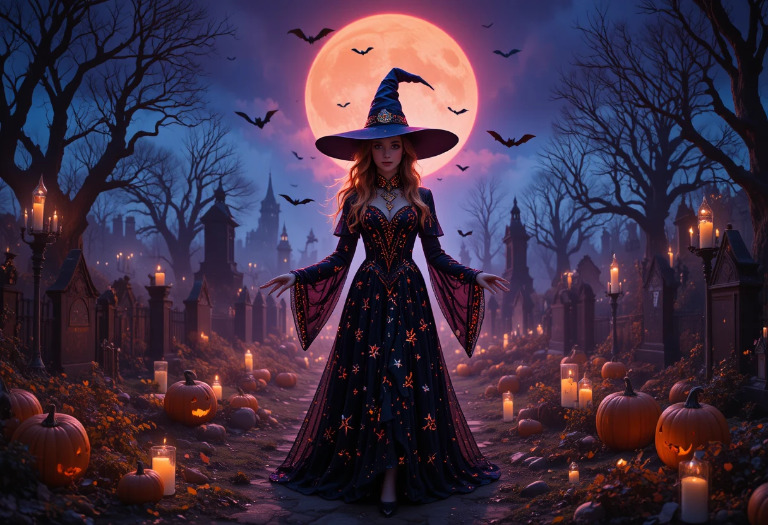
Samhain is full of rich symbolism. The black and orange colors we associate with Halloween come from ancient meanings: black for the death of the old year, orange for the fires of life still burning bright.
Animals like crows, owls, cats, and wolves are sacred during this time, believed to carry messages between worlds. Apples represent immortality and wisdom, while pumpkins symbolize abundance and protection.
And of course, the veil itself—that invisible line between realms—is the most powerful Samhain symbol of all. When you feel sudden chills, strange dreams, or flickering candle flames this time of year, it’s said the spirits are close, reminding you that life and death are never truly separate.
The Spirit of Samhain in Modern Times
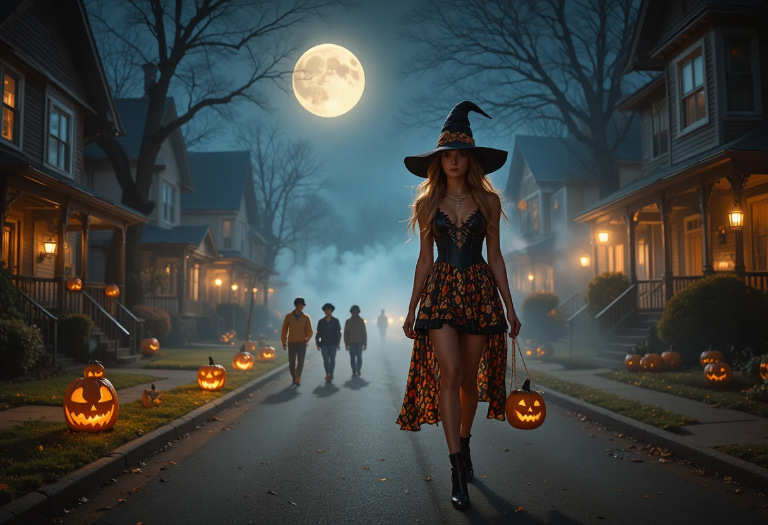
While modern Halloween has taken on playful, spooky fun, the ancient magick of Samhain is still alive. More witches, pagans, and spiritual seekers are returning to these roots—finding meaning beyond plastic skeletons and candy.
Samhain reminds us that every ending carries a seed of new life. As we honor the dead, we also honor ourselves—the parts we’ve outgrown, the things we’ve survived, and the wisdom we carry forward. It’s a night of remembrance, gratitude, and quiet transformation.
You don’t need a fancy altar or a long ritual to feel it. Just step outside on Halloween night. Feel the cool air, listen to the wind through the trees, and sense the hum of the unseen world around you. That’s Samhain—the whisper between breaths, the pause between heartbeats, the moment where everything changes and yet, everything continues.
Embracing the Shadow and the Light
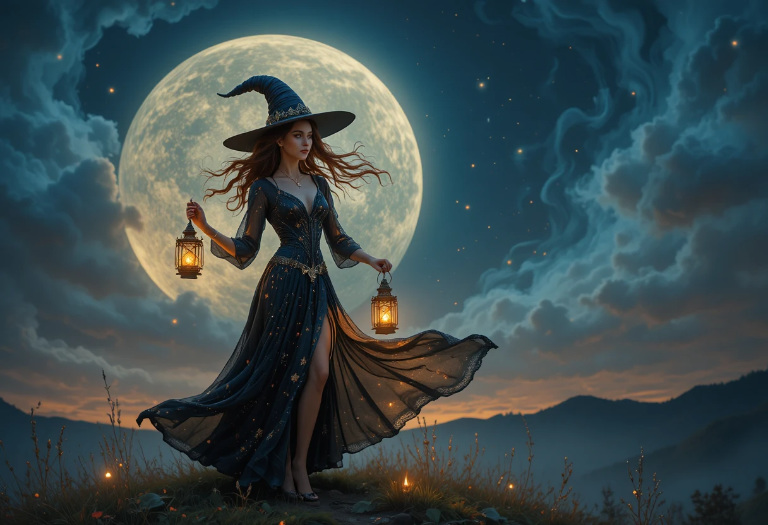
Samhain isn’t about fear—it’s about trust. Trusting that the dark holds wisdom, that endings have purpose, and that love doesn’t fade when someone crosses over. It’s about standing in the mystery and feeling grateful for it all—the living, the dead, and everything in between.
As you honor this sacred night, may your spirit be brave enough to face what must end, wise enough to welcome what’s to come, and open enough to feel the quiet beauty of both. Samhain reminds us that even in darkness, magic never dies—it simply changes shape.

